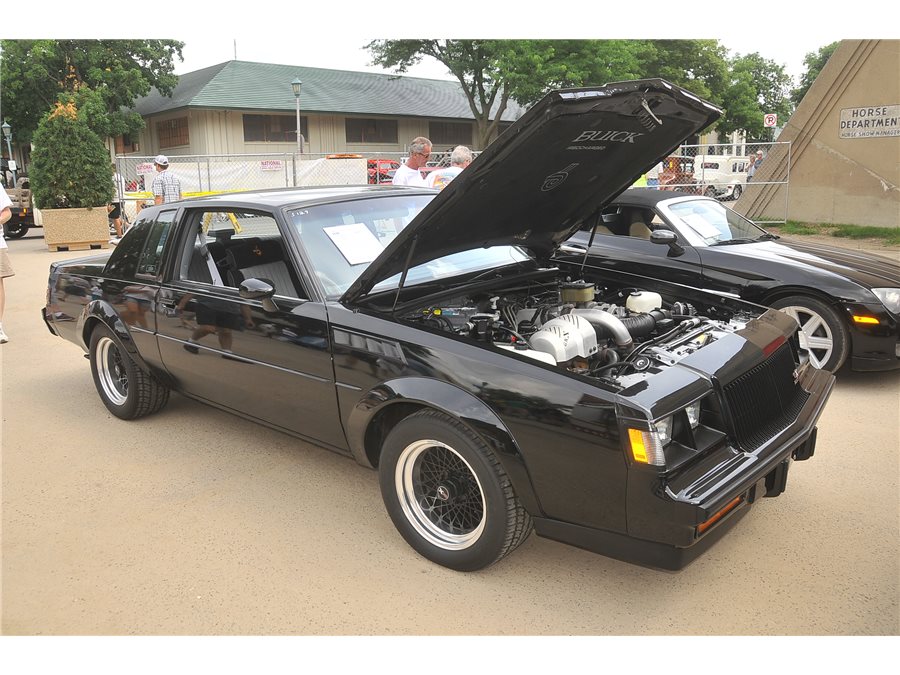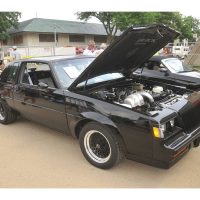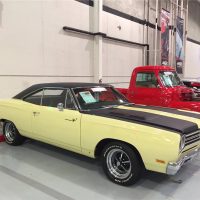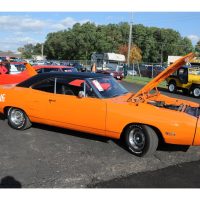
I’ve recently been asked about the sale of a 500-mile 1987 Buick GNX on Bring A Trailer for $130,000 on March 25 of this year. On March 18, a 1986 Grand National (a very different car, I was reminded by Colin Comer) with 5,700 miles bid to $38,750 and did not meet reserve.
The buyer of the 500-mile car paid nearly a $100,000 premium to get 5,200 fewer miles.
There are a couple of reasons why this makes no sense to me.
First, you’ll find that most of us at SCM have little interest in paying a huge premium for a low-mileage car. By doing so, you guarantee you will be afraid to drive the car. If you put 3,000 miles on your $130,000 GNX, you will have suddenly turned it into a $50,000 car.
You will have just paid $27 per mile to enjoy your GNX.
That’s a very high price to pay to drive a car that really offers no driving pleasure — at least in terms of what I look for when I buy a car.
I have a hard time figuring out how the Value in Use equation plays out with a GNX.
Has anyone ever said, “I love driving my GNX on a curvy road?” “Or, just look at how beautiful the lines are on my GNX?”
Where does the GNX club have its rallies and tours?
Would you take it to the dragstrip and really hammer the car, smoking the rear tires? After all, this is one thing it can really do.
When you get together with fellow GNX owners do you walk around and compare odometers? The guy or gal who has used their car the least gets the prize?
Now, it’s no secret that I’m a sports car guy.
On a tour a couple of years ago, I watched the odometer in my 1967 Duetto go from 99,999 to 00,000. Those are original miles, and I’m pleased I saw the car get to 100k. I’m not about to park the car to keep the mileage down.
The 1975 Ferrari 308 GT4 we recently purchased from Fantasy Junction has covered over 225,000 miles — all of them documented. It may be the highest mileage Ferrari in the world. It drives like a 30,000-mile car (clearly its always been properly maintained) and I love the fact that I could drive it to the moon and back and not affect its value.
I have owned muscle cars. There was a 1969 383-ci 4-speed Road Runner and a 1970 440-ci, 4-bbl, 4-speed Superbird.
I enjoyed the adrenaline rush when you floor them. But after those five or six seconds are up, you’re done.
These are not cars that handle or stop, and they were never meant to be. They aren’t cars for touring.
So I have a couple of fundamental problems with a 500-mile GNX. First, when you pay a premium for a low-mileage car you are essentially guaranteeing you will never drive it.
Second, when you buy an older muscle car, the ways that you can use the car (which means putting miles on it) are extremely limited.
I’d like to hear from GNX aficionados, and have you explain to me your attraction to this car. I’m willing to listen and learn.




If I bought one I’d drive it as a weekend warrior.
My problem with the GNX is that American muscle cars are meant to be V8s, aren’t they? Your Ferrari is…
Well, most of them ARE V8s, but Vipers, for example, are V10s. And rally the engine was the best part of the GNX. The rest of it… well, not perhaps so great.
I agree with your basic premise: why buy it if you are not going to drive it. At the same time, many muscle cars are as much fun, and give as much satisfaction, as a great many European sport cars. I do not have a GNX (or truly similar) type of car but do have a 2007 Shelby GT500 convertible and a 2013 Boss 302, and I drive both of them about 1,500 to 2,000 miles per year, having put a little over 24,000 miles on the Shelby over its 12 plus years of ownership and having put a little over 14,000 on the Boss, which will be 7 in September. Every mile has brought a smile. Each of them is fun to drive in a different way. Each of them is rare enough that you don’t see your twin next to you or going the other way. Each of them has contributed to the evolution of the species in its own way. Each is a great car that gets driven on nice days and is very much appreciated. The miles may depreciate the cars slightly but not the same way as if one pays an incredible premium for a low mileage example and pays an exorbitant price for every mile it is driven. Cars are to be driven and should not be denied their purpose.
I would never own a car that I couldn’t drive. That was one of the reasons that I sold my Ferrari and dropped out of that club forever…They only displayed their cars, I drove mine.
The joy in owning any vehicle is to use it ans enjoy it.
I currently own 4 collector cars and I enjoy driving all of them.
Well, you have hit the nail on the head. All you can do with a car with such low miles on it is polish it and take it to shows. And since it’s a car of somewhat limited appeal and not one of broad desirability, the number of shows it will be invited to is rather limited. One would have possibly the best example of a car that not many people covet, and not many people even know about.
thanks Keith for reaffirming my choice in buying a modestly priced 308 GTS with 45k miles – I call it my “beater” Ferrari!
It’s been maintained, has some warts, some week-end fixer-upper needs – I live in the enjoyment of driving it, not the fear of fear of single raindrops or lame parking lot citizens!!
Want something to look at? Buy a painting. Cars are for driving.
I love to see original low mileage cars like this and I’m glad there are people in the hobby who go through the trouble to collect and preserve them, even though I prefer driving my cars.
Keith, I’m sure you understand that people get there enjoyment from collecting all types of cars for many different reasons. Our hobby would be terribly boring if we all collected the same things for the same reasons. Maybe we shouldn’t be critical of others motives for their collections but be happy that our hobby is so diverse and that there are so many different vehicles in various states of preservation for us to enjoy.
Hello Keith,
If you were young when the car was built and wanted one, you will pay a good dollar for a clean one at today’s prices. This has been true for any collector car in history.
By the same logic, why pay someone to restore a car to concours condition and put more money into it than it is worth? Once the restoration is done, you have a “new” car that is worth less than what you paid for it…and this is before you drive it. With the GNX, it may be worth less, but only AFTER you drive it. What I have come to love about SCM is that you explain the car market in the context of the emotional car person. You discuss why spending $4 million more on a particular Ferrari California Spyder makes sense because the wheelbase is slightly shorter. Why one of the 18 Hemi ‘Cuda convertibles from 1970 are worth $2.5 million while the 29 with only a 440 Six Pack are worth a paltry $200k. Donald Osborne did a great job celebrating the emotion of cars in the April issue when he wrote about a $140k beetle selling for $30k and how the $110k loss on the restoration was wonderful because “emotions trump market return.” By all accounts the beetle is even worse to drive than the GNX and the $110k hit is an even bigger loss than turning this GNX into a daily driver. I truly hope this blog post is a cry to hear the “emotion” behind the bidders on the GNX (8 people bid $100k or more) instead of hidden jabs at ripping them down. I suggest starting with the nostalgic stories in the BaT comments.
Well said Aaron.
I like the GNX far more than you do, but I agree with your premise about buying low-mileage cars. I want to buy a car I can drive, not a museum exhibit. That’s why I just bought a 2016 Z06!
There is probably some attraction to the new GNX. I was a Studebaker owner for 50 years having sold my last one in September 2018. I did not start driving until 1968, Studebaker stopped producing cars in 1966. I have never had the opportunity to purchase a new one. Over the years I have found three, two were what I would call reasonable but could not afford either at the time. The third was so far out priced that I did not think anyone would ever buy it, the last I heard this one was rotting under a carport in Illinois. The first two are probably available again with not many more miles on them then when I looked at them. So yes I would pay a premium for one, how much who knows. But time marches on and my interest is now with something more contemporary, anyone have a new 1998 or 1999 Dodge Neon R/T out there?
I worked with a guy who bought this very model and drove it 12 months a year in Upstate New York’s salted roads. He thought it was a fun car to drive. The GNX is kind of pretty, so I certainly don’t fault someone for wanting one.
One of the things that I love about the various car collecting cultures, is that people fall in love with every kind of machine and that they are willing to invest far more than market value in restoration and upkeep.
I volunteer at the North East Classic Car Museum in New York. The museum has about 200 vehicles, including a 1929 Deusenberg that is certainly worth over a million. Yet, the only other Holbrook body car like it was purchased by a farmer for use as a log truck. In fact, every car in the museum, regardless of current value, was not worth restoring at one time. But people kept and restored them anyway in order for us to have them today. I proudly continue that tradition by investing in cars that will never be worth what I have in them.